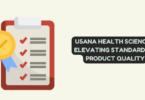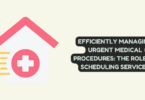
Managing Requirements: Requirements Management Process
This article provides a comprehensive guide to analyzing the various aspects of requirements management.
But, first, we need to establish the difference between a need and a requirement. Requirements describe the attributes, capabilities, or quality factors that must be included in any system. Providing a bridge between high-level requirements and specific project requirements.
There is an important distinction between needs and requirements: needs are broad objectives, while requirements are measurable, actionable, and tailored elements derived from those needs.
In order to achieve project goals, this differentiation establishes clarity, reduces ambiguity, and allows a focused approach to be used.
What are Requirement Management VS Project Requirements?
There are many ways to get a better understanding of requirements gathering for a project as a business analyst or stakeholder. When looking into requirements management and what it involves, you’ll notice that capturing, documenting, and maintaining a project’s needs and constraints is the main aim of it. While project management encompasses the entire project lifecycle, ensuring that all stakeholders are on the same page and that any changes to the project requirements are properly handled.
In essence, requirements management serves as a framework for aligning project goals with stakeholder expectations. The project evolves in sync with its defined objectives through continuous communication, collaboration, and adaptability.
While project management oversees the overall structure of a project, requirements management focuses on the specifics.
Project management deals with timelines, budgets, and resources, answering the “how” of project execution.
The former focuses on overall project orchestration, while the latter defines and manages the detailed project requirements. Requirements management answers the “what” by making sure the project achieves its objectives.
The Different Types of Requirements Management
Requirements management involves navigating diverse requirement management tools and type to each of which contributes to the project’s success. In order to gain a comprehensive understanding of the project landscape, it is crucial to understand and categorize these requirements.
As teams dive into specific tools tailored to their needs, they not only navigate the complexities of project requirements but also ensure a holistic view that contributes significantly to the success of the project. As a result, they gain a nuanced understanding of the project landscape.
The categorization of these requirements adds another layer of clarity to the project management process, enhancing communication, collaboration, and overall productivity.
Business Requirements management
Projects are aligned with organizational goals based on business requirements. Based on these requirements, we can get a sense of what the business objectives are for the project.
As stakeholders collaborate to understand these strategic requirements, the project’s outcomes contribute to the success of the organization as a whole. In order to ensure that a project aligns with strategic business objectives, identifying and prioritizing business requirements is crucial.
User Requirements
A user requirement focuses on the needs and expectations of the end user. In this aspect of requirements gathering, we engage with those who will interact with the final product to understand their preferences, the features they need, and the user experience they expect.
To create a product that meets the expectations and needs of its intended audience, it is essential to articulate user requirements. By capturing and documenting end-user requirements, we ensure that the end-user’s perspective is incorporated into the project’s design and development.
System Requirements
Software requirements management and system requirements describe how software is developed. System requirements are an important part of the software development process, providing the foundation for efficient requirements management. Various project specifications are organized and tracked with ease using requirements management software within this department.
There are two subcategories within this category: functionalities and non-functionalities. A software’s functionalities refer to its features and capabilities, while its non-functionalities refer to performance, security, and usability. In this way, teams can navigate the intricacies of software development with precision, ensuring that both functional and non-functional aspects are addressed effectively for a successful project outcome.
Functional And Non-Functional Requirements
So, how do you know what’s a functional and non- functional requirement?
What a system should be able to do is specified by its functional requirements. To accomplish the project objectives, the system must possess specific functionalities and features. Any operational details, such as user interactions, data processing, and data storage, are included here. As you define functional requirements, you are creating a blueprint for how the system will function and what it will be capable of doing.
The non-functional requirements go beyond the specific functionalities of a product. There are many aspects to consider, such as performance, security, reliability, and scalability.As opposed to what functions the system performs, non-functional requirements describe how well it performs those functions. For a final product to be effective, secure, and user-friendly, these non-functional aspects must be addressed.
By recognizing and categorizing these requirements, a structured approach to project development is created, so that the project team understands the different aspects that must be taken into account to succeed.
Is Requirement Management Important?
It is vital that requirements are managed effectively in order for a project to succeed. As a result, it mitigates risks by ensuring that project objectives are clearly understood, minimizes scope creep by controlling changes, and improves communication between stakeholders.
In addition to facilitating a smoother development process, it acts as a safeguard against misunderstandings. The requirement management process ensures alignment with stakeholder expectations throughout the entire project lifecycle.
What is a Requirement Management Plan?
The requirement management plan outlines the approach to eliciting needs, analyzing requirements, and verifying and validating the system. Eliciting needs involves identifying and understanding stakeholder expectations. Requirements analysis entails refining these needs into specific, actionable requirements.
A well-crafted plan provides a roadmap for the project team, guiding them through the complexities of requirements management during the subsequent verification and validation stages.
Managing requirements effectively requires dealing with ambiguity, accommodating changing stakeholder needs, and prioritizing requirements effectively.Ambiguity in requirements can cause misunderstandings and delay projects Addressing changing stakeholder needs requires a flexible approach, and prioritizing requirements requires a thorough understanding of project objectives and stakeholder expectations.
Communication, collaboration, and the use of tools that enhance transparency and traceability are key to overcoming these challenges.
Requirements Management Development Process
The requirements development stage is a crucial phase that shapes the trajectory of the entire project, laying the groundwork for successful execution. Each component of this multifaceted stage contributes to the comprehensive understanding and documentation of project requirements, which is essential to its success.
Planning Stage:
During the planning phase of requirements development, the strategic framework for the entire process is defined. This stage includes defining the scope, objectives, and overall strategy.
During this phase, project stakeholders collaborate to outline the project’ requirement’s, goals, and the approach to gathering and documenting requirements Setting a clear roadmap at the outset ensures alignment among team members and provides a roadmap for subsequent activities in the requirements development stage.
Needs and Requirements Artifacts
A pivotal aspect of the requirements development stage is the creation of needs and requirements artifacts This involves documenting requirements in a structured and organized manner.
The project begins with identifying needs and translating them into actionable requirements, which serve as the foundation for the project. Documents such as requirement documents, use cases, user stories, or any other relevant document are considered artifacts.
As a result of this meticulous process of artifact creation, all project stakeholders have a detailed understanding of what needs to be accomplished, which fosters transparency and reduces the likelihood of misunderstandings.
Establish a Baseline
During the requirements development stage, establishing a baseline is crucial. Once the baseline is set, any subsequent changes are carefully managed and controlled once the initial requirements are frozen. By evaluating and approving any changes to the baseline early on in the development process, disruptions are minimized.
In addition to providing stability and coherence to the evolving project, the baseline ensures that all stakeholders have a clear understanding of the project’s goals.
Who is Responsible for Requirements Management?
Requirements management is divided among a cross-functional team. Project managers ensure overall project coordination, business analysts elicit and analyze requirements, developers implement the specified requirements, and end users provide crucial feedback.
Incorporating diverse perspectives and insights into requirements management requires effective collaboration among these roles.
Advantages & Benefits of Requirements Management Process
As a result of a robust requirements management process, project risks are reduced, stakeholder satisfaction is increased, and project predictability is improved.
A well-managed process ensures that the project stays within scope, budget, and schedule, ensuring successful project outcomes. Additionally, it fosters a transparent and collaborative environment, where all stakeholders are kept informed and aligned.
It is important that the right requirements management tools and requirements management software are selected in order to improve the requirements management process.
These tools should enable collaboration, traceability, and version control, which will facilitate seamless communication, requirements management and information flow throughout the project lifecycle.
Technology can significantly enhance the efficiency and effectiveness of managing project requirements by reducing errors and increasing productivity.
Throughout the project lifecycle, the Requirements Management Process ensures alignment, clarity, and adaptability by navigating diverse requirement types and the crucial Requirements Development Stage.
The interplay between Requirement Management and Project Management highlights their key role in the project execution process. A well-structured process reduces risks and enhances stakeholder satisfaction.
Through skillfully navigating complexities, requirements management drives innovation, fosters collaboration, and delivers remarkable results.






